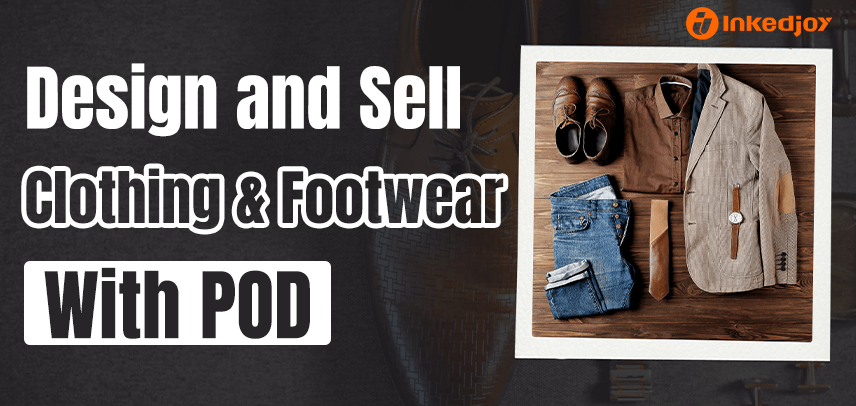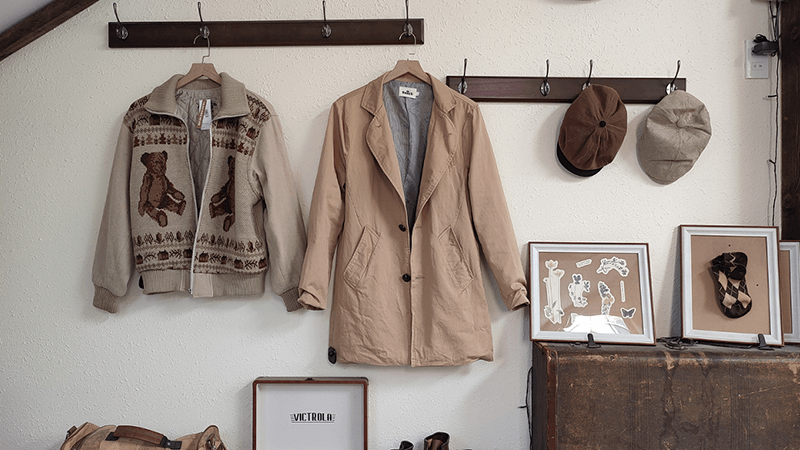
Selling Your Designs on Apparel and Footwear with Print on Demand
The print on demand world has completely changed the game for anyone wanting to sell custom apparel and footwear. It's a business model that cuts out inventory costs and financial risk, letting you test your design ideas without a big upfront investment. The key to making it work is a solid plan, quality designs, and smart marketing that speaks to the right people.
How Print on Demand Works
Print on demand is built on a simple, powerful idea: products are made only after a customer buys them. This flips traditional retail on its head by getting rid of the need to buy in bulk, rent storage space, or manage a stockroom. As a seller, you upload your designs to a platform, set your prices, and collect the profit from each sale, all without ever touching the physical product.
The best part about this model is that almost anyone can do it. You can launch a business right from home and experiment with a bunch of different designs at once. The risk is incredibly low because you aren't stuck with a pile of unsold shirts if an idea doesn't pan out. You can just remove the design from your online catalog without losing any money.
For custom clothes and shoes, print on demand gives you a huge canvas. T-shirts, hoodies, tank tops, canvas sneakers, boots, and sandals all feature your artwork. The technology has gotten so good that it can handle anything from a simple logo to a complex, all-over pattern that covers the entire item.
Finding Your Niche and Audience
The path to success starts with picking a specific audience instead of trying to sell to everyone. Niche markets are often more profitable because you can create designs and messages that truly connect with a dedicated group.
For example, pet lovers are a huge market, always looking for custom gear that features their furry friends. Sports fans want team-inspired designs or motivational quotes.
Hobby groups for things like gardening, fishing, or crafting are full of design potential. Even professional groups like nurses, teachers, and engineers enjoy apparel with inside jokes and industry-specific humor.
This is where your research really pays off. Spend some time on social media to see what topics are trending and which hashtags are popular within different communities.
Online forums and discussion groups give you a direct line into what people are excited to buy. Many successful sellers spend weeks digging into their chosen niche before they even start on a design.
You can also target customers geographically. Designs with local pride, like city skylines, regional slang, or nods to local landmarks, often sell very well. Seasonal trends, from holiday themes to summer vacation graphics, can also create profitable, timely opportunities.
Creating and Refining Your Designs
A great design is what makes a product stand out from the competition. You don't need a formal art degree or expensive software to make professional-looking graphics, but you do need an eye for detail and a feel for what looks good in print.
The colors you choose affect both the look of your design and how much it costs to produce. Designs with fewer colors are usually cheaper to print and often have a cleaner, bolder look on fabric.
Make sure there's high contrast between elements so they pop on different colored garments. Text needs to be clear and easy to read, even when it's shrunk down for smaller items like kids' clothes.
Every platform has its own resolution requirements, but you'll always want to use high-quality files to avoid blurry or pixelated prints. Vector files are perfect for logos and text, while high-resolution raster images work well for photos.
Many sellers create a few variations of their most popular designs, tweaking colors and layouts to fit different types of products.
Your choice of fonts can make or break a design. Clean, simple fonts are usually more effective than overly decorative ones, especially on smaller items. If you're pairing fonts, try not to use more than two different styles, as it can make the design look cluttered and chaotic.
Choosing the Right Platform and Setting Up Shop
Different print on demand platforms have their own strengths, and it's common for sellers to use more than one service at a time. When you're picking a platform, look at the variety of products they offer, what your profit margins will be, their shipping options, and whether they are a good fit for your target market.
Some platforms are great for basics like t-shirts and hoodies, offering low prices and fast shipping. Others might specialize in more unique items like custom footwear or all-over-print dresses. The quality can vary a lot from one service to another, so it's always a good idea to order samples before you start selling.
Location matters, too. A platform with printers in your country will usually mean faster, cheaper shipping for your local customers. If you're aiming for a global audience, check their international shipping capabilities.
When you set up your shop, keep your branding consistent everywhere. Your profile, shop description, and product pages should all have the same tone and visual style. A professional-looking storefront helps build trust with customers and keeps them coming back.
Showcasing Your Products and Writing Great Listings
Even though print on demand platforms give you mockup images, using your own photos can really boost sales. Lifestyle shots that show your products being worn or used in real-life situations help customers connect emotionally. Seeing a shirt on an actual person gives a much better sense of fit and style than a flat graphic.
Your product titles need to include strategic keywords without sounding like spam. A strong title usually includes the product type, a few key elements of the design, and who it's for. For instance, "Funny Cat T-Shirt for Book Lovers" works much better than a generic title like "Cat Shirt."
Detailed descriptions are for both your customers and for search engines. Tell people about the unique features of your design, and include helpful information about sizing and care. Adding a little story about what inspired the design can also create a stronger connection and encourage a sale.
Tags and categories are essential for helping customers find your products. Look up popular search terms in your niche and weave them into your listings. Just be careful not to overdo it—"keyword stuffing" can hurt your search ranking and looks unprofessional.

Marketing Your Gear and Making Sales
Social media is one of your best tools for promotion. Platforms like Instagram and Pinterest are perfect for showing off apparel and footwear. Posting consistently and creating engaging content will help you build a following that you can turn into customers.
Content marketing, like writing a blog or making videos, establishes you as an expert in your niche. If you create content that helps your audience while gently promoting your products, you'll often see better results than with a hard sell. Behind-the-scenes looks at your design process or your business journey can also build a more authentic bond with your followers.
Email marketing is a great way to stay in touch with your customers and encourage them to buy again. Send out newsletters with new designs, special promotions, or exclusive discounts to keep your brand on their minds. Setting up automated abandoned cart emails can also help you win back sales that might have otherwise been lost.
Partnering with influencers can give your brand a huge boost. Micro-influencers, who have smaller but highly engaged audiences, often provide a better return on your investment than big-name celebrities. Sending free products to the right influencers can lead to genuine reviews and valuable social proof.
Keeping Quality High and Customers Happy
Your long-term success hinges on customer satisfaction, which leads to good reviews, repeat business, and word-of-mouth advertising. It all starts with choosing a quality platform and extends to how you communicate with your customers.
Always order samples to check the print quality, the feel of the fabric, and how the sizing runs before you list a product. You might find that one platform is great for t-shirts, while another does a better job with footwear. Doing regular quality checks helps ensure every customer gets a great product.
Responding quickly and helpfully to customer questions builds trust and can stop a small issue from turning into a negative review. Try to answer common questions about sizing, shipping, and care right in your product descriptions or an FAQ section.
Return and exchange policies are handled by the platforms, but you should still communicate them clearly to your customers. When people know what to expect, they feel more confident about making a purchase. Make sure you understand your platform's policies so you can answer questions accurately.
Growing Your Print on Demand Business
As you grow, it's best to be systematic. A good strategy is to expand your product line within your current niche before jumping into a completely new market. This lets you tap into your existing customer base while you explore new product ideas.
Use your sales data to make smart decisions. Your reports will show you which designs, products, and marketing efforts are working best. Pay attention to seasonal trends, where your customers are located, and other patterns to guide your growth.
Automation tools can take over routine tasks like posting to social media or sending out marketing emails, freeing you up as your business gets bigger. But don't forget that the personal touches, from customer service to the creativity in your designs, are often what set you apart from the competition.
Bringing Your Creative Vision to Life
Print on demand has opened the door for creative people to build real businesses without the old barriers of retail. Success comes down to your dedication to creating great designs, doing smart market research, and providing excellent customer service. Start small, test your ideas, and grow step-by-step to build a lasting brand in the world of custom apparel and footwear.



